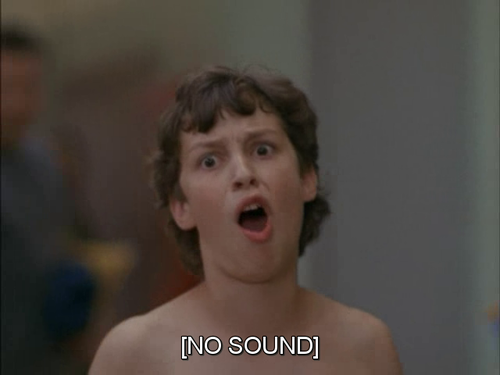Since their inception in 1970, closed captions haven't attracted a strong fan base.
Able-bodied caption fans are constantly forced to justify why someone turned them on. It's distracting, whines everybody else. Can't we switch them off now?
It's not that distracting, the caption supporter sighs, giving in.
But really, why do so many people have it out for closed captions? It is a senseless hatred that has gone on too long. If we're okay watching foreign or Tarantino films that require a couple hours spent reading onscreen text, we shouldn't be so sensitive about them in other contexts. Because they're pretty useful.
Let us count the ways we love thee, small words on the bottom of the screen.
First, the obvious: Closed captions help the deaf and hard-of-hearing.
The National Institute on Deafness estimates that nearly three out of every 1,000 children in the U.S. are born with hearing loss in at least one ear. And about 15 percent of grown adults reported some trouble hearing, according to a 2012 survey. Millions of people rely on captions. Closed captioning is such a public service, that its leading organization operates as a non-profit, in order to allow deaf and hard-of-hearing individuals the same access to media as everybody else. The FCC even regulates captions to ensure they're accurate, synchronous, complete and not floating on the side of the screen in some weird spot.
And here's a fun fact: The first show to broadcast with closed captions were reruns of "The French Chef" with Julia Childs.
But THAT'S NOT ALL.
Captions help you out when people are being loud.
We can all agree that other people are the worst, and it's never more obvious than when they're interrupting your show with their mouth noises. But if you switch on closed captioning, you can still get the gist of the audio portion -- whatever you can make out over the din -- while actually understanding what people on the screen are saying.
They help when you forget your headphones.
Certain places are not conducive to playing video aloud -- the gym, the library, the office where you work -- and that's a real bummer when you've forgotten your headphones. Closed captioning, however, can save your workout, homework procrastination, or meeting. It's not the same, but it's better than nothing.
They help when Netflix doesn't go loud enough on your tinny little laptop speakers.
Laptop speakers aren't great at bringing the quiet bits of streaming video to audible decibels. On more than one occasion, this writer has leaned on closed captioning to make out quiet scenes, because Jon Snow is a whisperer and there's nothing we can do about that.
Closed captions can maintain your sanity when a movie flips between intimate scenes and room-filling explosions.
A dynamic range of volume is great for the theater, where high-quality sound systems ensure you don't miss a word, but often, that isn't the case with home viewing. Having the words at the bottom of the screen means you don't have to keep turning the volume up to hear what characters are saying, and then quickly turning it down for an action scene.
They can help you brush up on foreign languages.
¿Quieren practicar su español? Oftentimes, captions are also offered in other languages, like Spanish and French. Researchers have actually named English closed captions a good resource for ESL speakers looking to improve their language skills.
And finally, sometimes they include hidden gems like these.

It should be noted, however, that certain poor-quality closed captions aren't looked upon kindly by the deaf and hard-of-hearing communities, whom they are supposed to first and foremost serve. We just hope that media providers continue to take this service seriously, because it's great for everyone. So stop hating.
To subscribe to our HuffPost Entertainment WhatsApp account:
1. Download WhatsApp on your phone.
2. Save this number, 347-334-1794, in your phone’s contacts.
3. Text "POP" to that number via your WhatsApp account.
You can unsubscribe at any time by texting “STOP" to the same number.




